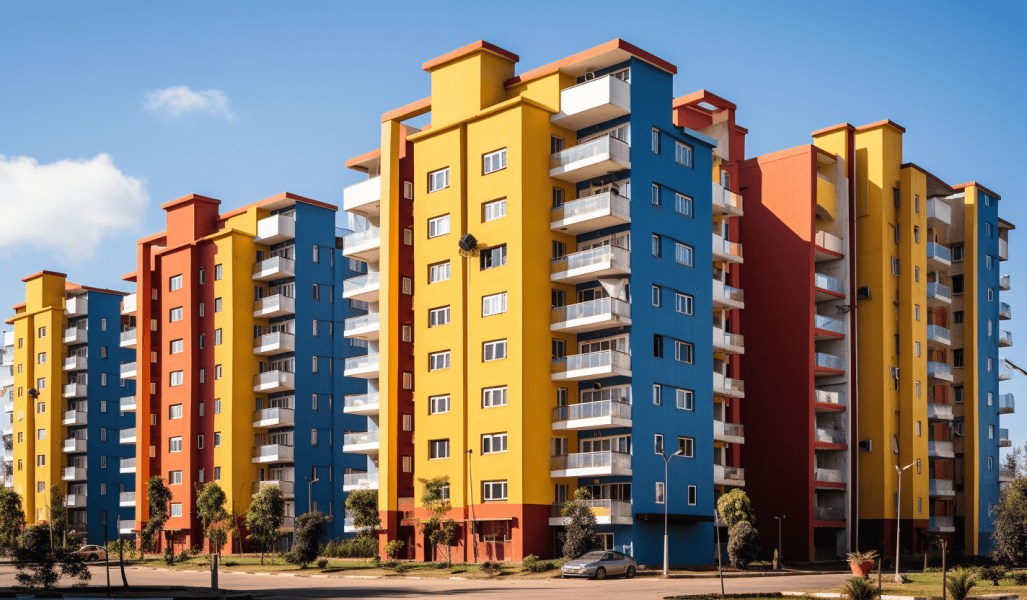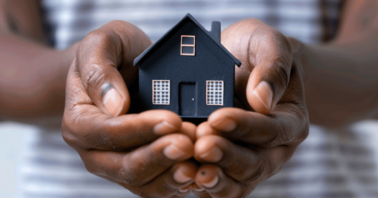In Kenya, citizens can now own affordable homes through President William Ruto’s housing initiative. The program aims to build 250,000 units annually, with prices ranging from Ksh 840,000 to Ksh 5.76 million.
READ ALSO: Boma Yangu Project – Affordable Housing Program in Kenya
The housing options are divided into social, affordable, and market units, accommodating various income groups. Social housing includes one to three-room homes for slum dwellers.
Affordable units consist of studios and two to three-bedroom apartments.
Market-driven developments offer two to three-bedroom houses.
Under this initiative, half of the houses will be affordable, 30% will be market-rate, and the remaining 20% will be social housing.
The cost varies based on the type of housing, with social housing priced at Ksh 42,000 per square meter, affordable housing at Ksh 48,000 per square meter, and market-rate houses at Ksh 72,000 per square meter.

To make homeownership accessible, the government introduced a tenant purchase scheme (TPS). For example, a 20 square meter room costs Sh840,000. Beneficiaries pay a 10% deposit and the rest through monthly payments of Sh3,200 over 30 years.
Despite some controversy surrounding the Affordable Housing Fund, which requires contributions from employees, the government aims to collect substantial funds for this housing initiative. The program, according to the government, not only promotes affordable housing but also plays a crucial role in job creation, aligning with the government’s broader economic goals.
This housing initiative stands as a significant step towards providing affordable housing for Kenyan citizens, supporting families, and contributing to the nation’s growth.
READ ALSO: KMRC’s Affordable Mortgage Options for Middle-Income Buyers
Does Affordable Housing Affect Property Values?
In Kenya, the impact of affordable housing initiatives on property values is a subject of significant interest. Several factors influence whether affordable housing lowers, stabilizes, or even raises nearby property values.
It’s not merely the presence of affordable housing but the specific conditions within the housing, neighborhood, and broader regional economy that mediate its impact on surrounding property values.
Research findings indicate that the replacement of blighted or vacant properties with affordable housing often has a positive effect on neighboring property values. Additionally, the concentration of affordable housing units matters; larger developments can positively impact nearby homes, but there might be a threshold beyond which overconcentration can lead to stagnant or declining property values.
The context of the host neighborhood is crucial; affordable housing is more likely to have positive effects in higher-value, low-poverty, stable neighborhoods with well-managed housing developments.
Management of Affordable Housing
Furthermore, the management of affordable housing plays a significant role. Properties managed by non-profit community development organizations tend to have a more positive impact on property values due to their attention to neighborhood compatibility, design, and community needs.
Certain factors, like ownership type and structure type, have not shown consistent influence on property values, suggesting a need for context-specific analyses.
Additionally, aspects such as the quality and design of affordable housing structures, as well as tenant characteristics, are often discussed but lack comprehensive research.
In the Kenyan context, there is need for a nuanced approach to affordable housing initiatives. Understanding the local neighborhood dynamics, managing housing developments effectively, and ensuring a balanced concentration of affordable units can help maximize the positive impact on surrounding property values.
Policymakers and developers should consider these factors when planning and implementing affordable housing projects in Kenya.



